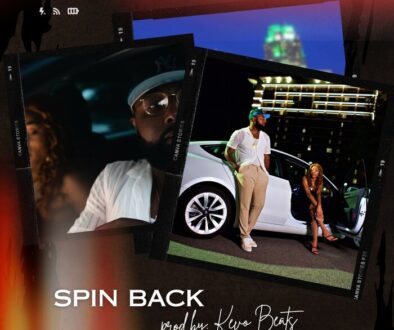What’s the Real Cost of a Major Record Deal?
New rappers are like California fires — the intensity is still the same as it was 20 years ago, but more people now have matches. Sadly, they’re all choosing to light up in the same spot. Everybody wants a major deal. It makes you wonder how many more crooked deals will be dealt before newcomers finally decide to promote their art independent of the strings of majors. Aligning with a major label offers few benefits beyond the spoils of fame and the facade of a panoramic lifestyle.
Let’s examine the merits and demerits of being on a major label, shall we?
Fame
Sure, having the long-reaching tentacles of majors will help deliver your product to the masses and bring you ample exposure. The problem is that new artists often get peanuts on their percentages in exchange for fame. Who wants to be a broke but famous star?
Advances
It’s true that you’re likely to get large advances from majors. That said, just remember that you have to pay back the advances and recordings costs from your royalty rate as applied to actual sales. When your records no longer shift those monstrous units, you’ll find that you’re stuck making money for a label even if the passion and financial benefits are long gone. It’s like taking a loan that ties you to your creditor long enough to limit your long-term success.
Sales
Ah, the main objective of every one who’s ever picked up a mic. If you made an argument in favor of sales 12 years ago, I would’ve nodded in agreement and slapped you a high-five.
A cursory glance at recent record sales, however, shows an industry on its knees. Every dime spent on promoting an artist’s record, from video production costs to radio promo, is re-coupable from his royalty points (with few exceptions, of course). When, say $300,000 of income goes to the label, only about 10% of that goes towards re-coupment.
This way, you’ll have to shift a million units to see substantial revenue from royalty points.
THE AGE OLD MAJOR VS INDIE ARGUMENT
It’s a surprise that newcomers, who clearly have respectable artistic goals, aren’t deciding to pass up opportunities to sign to majors. Drake, for instance, had an opportunity to buck tradition and stick it to the majors. He had already gathered reams of buzz. His mix-tapes were moving like hot cakes. He had an opportunity to debut in the Top 10 as an independent artist. In the end, he chose to play ball with the same people who passed on him when he was just Wheelchair Jimmy.
On the flip side, Chicago outfit the Cool Kids and New Orleans MC Jay Electronica have shown that it’s possible to attain reasonable success sans the backing of a major. Did you hear the one about Cool Kids co-headlining a North American tour with the Clipse in 2009? That’s an indie act with no full-length album co-headlining a tour with a major act. Lucrative deals with the likes of Nike and EA Sports stand as a testament to the Chicago duo’s ability to leverage their music for indie success. Similarly, Jay Electronica managed to build a cult-like following as an indie artist and continues to do so now that he’s signed to Jay Z’s Roc Nation.
Indie labels like Rhymesayers, Duck Down, and Stone’s Throw Records have all managed to stay relevant for decades while consistently dropping quality albums. Everyone seems to be jostling for the top spot these days, but the smart ones have figured out that the middle is where the gold lies.
QUALITY VS QUANTITY
One area that illuminates the disparity between majors and indies is album packaging. Sometimes it takes an album that offers a combination of quality music and unique packaging to get a consumer’s attention. Brent Rollins, the mastermind behind many classic hip-hop album covers (including Freeway & Jake One’s Stimulus Package) laments that big labels are more reluctant to invest in superior packaging.
“When I work with large labels,” says Rollins, “it’s like pulling teeth just getting them to use something like a metallic ink on an album cover.
Sometimes they talk about something like 5 cents out of a dollar extra to do something. I know that adds up when you’re printing a lot of them, but we’re talking about giving something back to people.”
While large record companies are typically less enthusiastic about embracing new ideas, independent labels have always been synonymous with creative liberty. Others might continue to seek the rat race that is wooing a major label, but diligent artists will seize every available opportunity to steward their future and change the game.
Take it from Courtney Love, who’s seen both the good and the ugly side of major deals. “If a record company has a reason to exist, it has to bring an artist’s music to more fans and it has to deliver more and better music to the audience. You bring me a bigger audience or a better relationship with my audience or get the f–k out of my way.”
HOUSE ON FIRE
This is not to suggest that major record cartels are no longer relevant. They are. Previously undiscovered artists can benefit from the huge promotional break a major has to offer. It takes a plenty of funds to break a new artist — funds most artists don’t have on their own. But it’s important to weigh the pros and cons of signing to a major before making the plunge. What’s the real cost of signing a freaking 5-album major deal in the long run? What does it mean when an artist has to recoup, say $250,000 of her promo budget while the label earns 10 times that amount? Keep in mind that most artists makes $0 from royalty points until recoupment is clear. That’s sad.
The music industry is a burning house and people are running into the building with more gasoline instead of trying to douse the fire. Will this be the generation that finally capsizes a broken system or will it be the one that settles for the okey-dokey? Will this be the generation that revolutionizes music business or will it be the one that settles for a stint in the belly of the beast?



